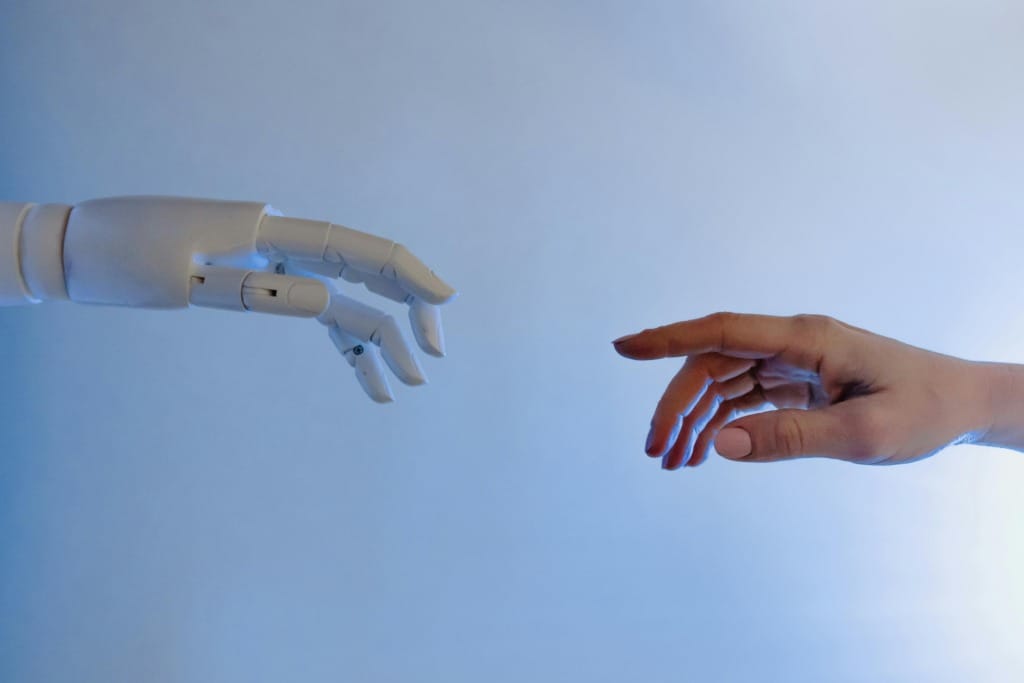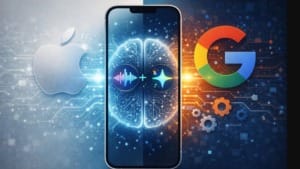Generative AI: Unlocking creativity through algorithms
Generative AI: In the digital renaissance Generative AI creativity emerges as a collaborator, unlocking boundless human creativity.

In the digital renaissance of the 21st century, a new muse has emerged in the form of Generative Artificial Intelligence (AI). This innovative technology is not just a tool; it’s a collaborator that unlocks the boundless potential of human creativity. As we delve into the world of algorithms that can generate content, we find ourselves at the cusp of a revolution that promises to democratize creativity and redefine innovation.
Table Of Content
The Catalyst for Creative Minds
Generative AI stands as a testament to human ingenuity, a catalyst that sparks an explosion of ideas in the minds of artists, writers, and creators across the globe. It’s a bridge between the raw potential of human thought and the precision of machine execution. By processing vast amounts of data and learning from patterns, generative AI algorithms can produce original content that resonates with human emotions and aesthetic values.
The symphony of generative AI begins with a simple input, a note struck by a human creator. From there, the algorithms compose a masterpiece, weaving together strands of possibility into a tapestry of innovation. This technology does not replace the artist; instead, it amplifies their capabilities, allowing them to explore realms of creativity previously unattainable.
The Dawn of Democratised Innovation
One of the most profound impacts of generative AI is its ability to democratize innovation. No longer confined to the echelons of specialised expertise, creative expression through AI is accessible to anyone with a vision. This levelling of the playing field means that diverse voices can contribute to the cultural narrative, enriching it with a multitude of perspectives.
The creative conductor: Generative AI in action
1. The Algorithmic Score
Imagine a composer sitting at a grand piano, fingers poised above the keys. Now replace the composer with an algorithm—an intricate set of instructions encoded in digital form. This algorithm, akin to a musical score, guides the generative AI to create something entirely new. It’s not just about playing the notes; it’s about interpreting the spaces between them.
Generative AI algorithms learn from existing data—be it text, images, or music. They analyze patterns, harmonies, and dissonances. Then, like a composer drawing inspiration from centuries of classical music, they craft their own melodies. The result? A symphony that blends tradition with innovation.
2. The Collaborative Orchestra
Creativity thrives in collaboration. Generative AI doesn’t work in isolation; it collaborates with human artists, writers, and designers. Picture a virtual orchestra: the violinist is an AI-generated melody, the cellist a human poet, and the percussionist a visual artist. Together, they create a harmonious fusion.
Generative AI augments human creativity by suggesting variations, exploring uncharted territories, and challenging artistic conventions. It’s not about replacing the violinist; it’s about giving them a new instrument—a digital bow that draws melodies from the ether.
3. The Canvas of Imagination
Visual artists wield generative AI like a magical brush. They start with a blank canvas, and the algorithm whispers ideas: “Try a splash of cerulean blue here,” or “Why not blend crimson with gold?” The artist responds, guided by intuition and the AI’s suggestions. The canvas becomes a dance floor where pixels are pirouettes, creating abstract landscapes, futuristic cityscapes, or dreamlike portraits.
Generative AI doesn’t merely mimic; it invents. It generates faces that don’t exist, landscapes from alternate dimensions, and fractals that defy Euclidean geometry. The artist’s hand and the algorithm’s logic entwine, birthing something both familiar and otherworldly.
4. The Literary Alchemy
Writers, too, have their quills dipped in generative magic. Imagine a novelist seeking inspiration for a character. The AI pores over literary classics, dissects archetypes, and whispers, “Combine the wit of Oscar Wilde with the vulnerability of Jane Austen.” The writer nods, weaving words into existence.
Generative AI doesn’t churn out bestsellers; it fuels the writer’s imagination. It suggests plot twists, character arcs, and metaphors. It’s the alchemical process of turning mundane sentences into poetic prose. And when the writer gazes at the final page, they know it’s a collaboration—their voice amplified by the AI’s whispers.

The Symphony Continues: Generative AI in Practice
5. Shaping Industries
Generative AI isn’t confined to the artist’s studio; it’s reshaping entire industries. Let’s explore:
- Fashion Design: Algorithms generate avant-garde clothing designs, blending fabrics, patterns, and silhouettes. Fashion houses collaborate with AI to create collections that defy convention.
- Architecture: Imagine an architect sketching a building on paper. Now imagine an AI analyzing urban data, climate conditions, and historical aesthetics. The result? Sustainable, awe-inspiring structures that harmonize with their surroundings.
- Music Composition: Generative AI composes symphonies, jazz improvisations, and electronic beats. It collaborates with musicians, suggesting chord progressions, harmonies, and unexpected melodies.
6. Fueling Scientific Discovery
Generative AI isn’t just about aesthetics; it’s a torchbearer for scientific breakthroughs:
- Drug Discovery: Algorithms explore chemical space, predicting molecular interactions and potential drug candidates. They accelerate research, saving time and resources.
- Particle Physics: At CERN, generative AI analyzes vast amounts of data from particle collisions. It identifies rare events, helping physicists unravel the mysteries of the universe.
- Climate Modeling: AI simulates climate scenarios, predicting the impact of greenhouse gases, deforestation, and ocean currents. It guides policy decisions and environmental conservation efforts.
7. The Ethical Pas de Deux
As we pirouette through this symphony, we encounter ethical dilemmas:
- Bias: Generative AI learns from existing data, inheriting biases. How do we ensure fairness when algorithms shape our world?
- Ownership: Who owns the AI-generated masterpiece—the artist, the algorithm, or both? Copyright laws waltz with uncertainty.
- Creativity Attribution: When an AI suggests a plot twist or a brushstroke, who deserves credit? The artist? The code? Or the cosmic muse that birthed the algorithm?
The Cosmic Dance: Generative AI’s Future
8. The Quantum Leap
As our symphony reaches its zenith, let’s peer into the future:
- Quantum Generative AI: Imagine algorithms that harness quantum states—their qubits entangled like cosmic lovers. These quantum minds will compose symphonies that resonate across dimensions, paint canvases with colors unseen, and pen poetry that echoes through time.
- Neural Imagination: Our brains are neural networks, firing synapses in intricate patterns. Generative AI will merge with our minds, augmenting our imagination. We’ll dream in algorithms, and our waking thoughts will birth new realities.
9. The Uncharted Constellations
Generative AI will explore uncharted territories:
- Creativity Beyond Human Constraints: Algorithms won’t mimic; they’ll transcend. They’ll create art forms we can’t fathom, music that defies scales, and literature that bends reality.
- Collaboration Across Universes: Imagine an AI poet conversing with a cosmic entity—an extraterrestrial muse. Together, they’ll weave tales of distant galaxies, love lost in black holes, and civilizations dancing on neutron stars.
The dawn of algorithmic inspiration: Shaping the future of creativity
Generative AI is not just a technological marvel; it’s a catalyst for a new era of creativity. By harnessing the power of algorithms, we can unlock new possibilities and redefine what it means to be creative. As we stand on the brink of this new frontier, it’s clear that the future of creativity is bright, and it’s algorithmically inspired.
















